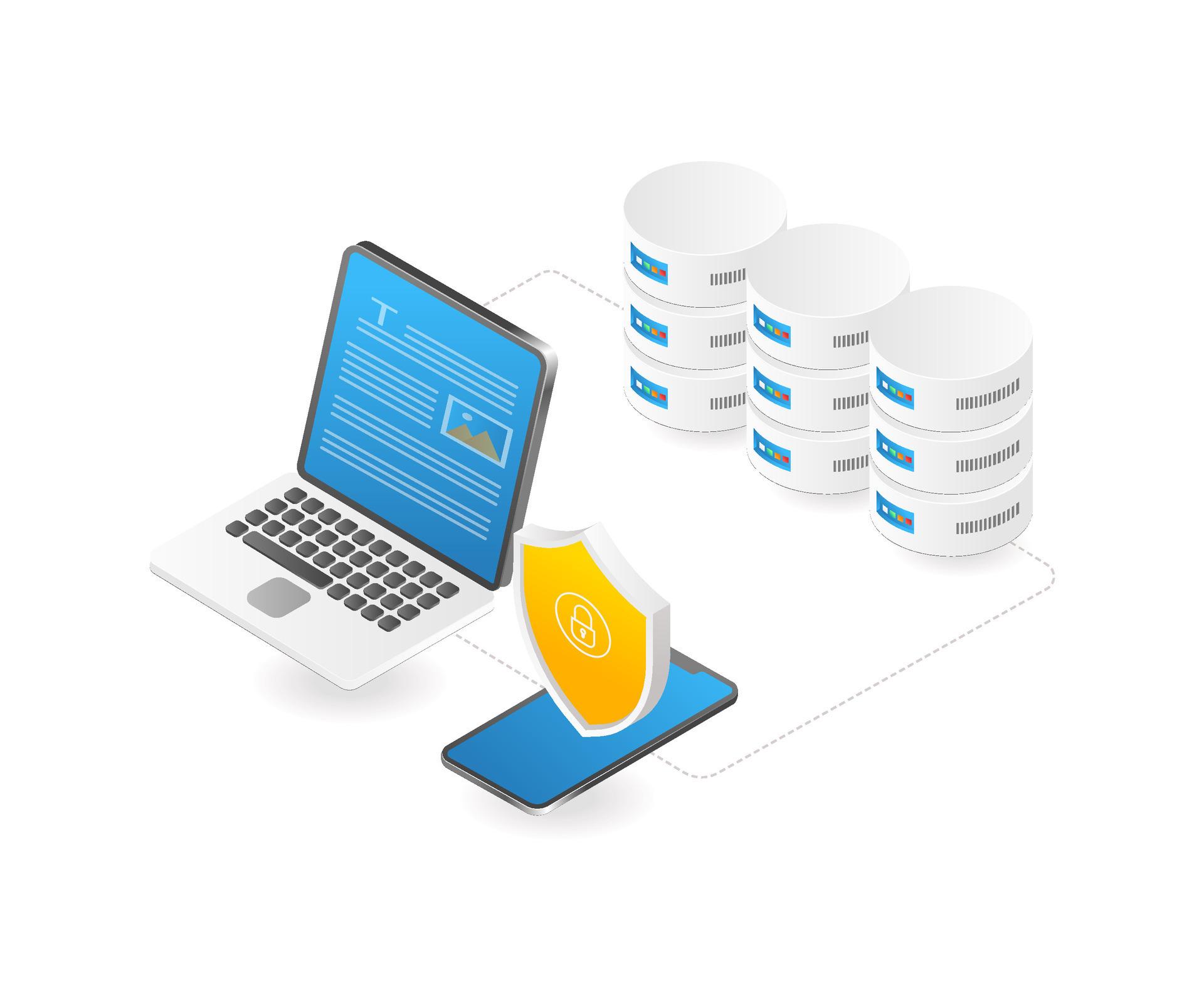An ultimate guide on back-end development 2024

What is backend development?
Backend development involves managing the server-side aspects of software, including server logic, databases, and the overall functionality of websites or web applications. It encompasses handling servers, databases, and application logic to ensure the smooth functioning of a website or application, operating behind the scenes.
Backend vs frontend development
Backend development and frontend development are two essential components of web development that focus on different aspects of creating a website or web application:
Both backend and frontend development are crucial for creating a fully functional and user-friendly website or application. They work together to deliver a seamless user experience while ensuring that the underlying system operates efficiently and securely. Collaboration between backend and frontend developers is essential to create a successful digital product.
Types of back-end languages
There are various programming languages used for backend development, each with its own strengths and purposes. Some of the most commonly used backend languages include:
- JavaScript (Node.js): Node.js is a popular runtime environment that allows developers to use JavaScript for server-side scripting. It's known for its event-driven architecture and non-blocking I/O, making it suitable for building scalable and high-performance applications
- Python: Python is a versatile and easy-to-read language used for backend development. Frameworks like Django and Flask are commonly used with Python for building robust web applications. Django provides a full-featured, batteries-included framework, while Flask is a lightweight and flexible micro-framework.
- Ruby: Ruby, often used with the Ruby on Rails framework, emphasizes convention over configuration, enabling rapid development of web applications. Ruby on Rails provides a set of tools and conventions that simplify common repetitive tasks.
- Java: Java is a widely adopted programming language known for its reliability, scalability, and performance. It's used in building enterprise-level applications and is supported by various frameworks like Spring and Hibernate for backend development.
- PHP: PHP (Hypertext Preprocessor) has been a longstanding backend language used for web development. It powers a large portion of the web, especially content management systems (CMS) like WordPress and e-commerce platforms like Magento.
- C# (C-Sharp): C# is primarily associated with Microsoft's .NET framework. It's used for building scalable, secure, and robust web applications, particularly in Windows environments. ASP.NET is a popular framework used with C# for web development.
- Go (Golang): Go is a statically typed language developed by Google. It's known for its simplicity, concurrency support, and efficiency. Go is gaining popularity for building backend services that require high performance and scalability.
- Scala: Scala combines object-oriented and functional programming paradigms and runs on the Java Virtual Machine (JVM). It's suitable for building scalable and concurrent applications, often used in conjunction with frameworks like Play Framework and Akka.
These backend programming languages offer different features, ecosystems, and frameworks, allowing developers to choose the one that best suits the specific requirements of their projects. The choice often depends on factors such as performance needs, scalability, developer familiarity, community support, and the nature of the project itself.
Back-end tools & technology
Backend development relies on various tools and technologies to build robust and scalable web applications. Here's an overview of some commonly used tools and technologies in backend development:
Databases
Databases serve as critical repositories for storing and managing vast amounts of structured or unstructured data in backend development. They facilitate efficient data retrieval, manipulation, and storage, catering to various application needs.
- SQL Databases: MySQL, PostgreSQL, SQLite, Microsoft SQL Server, Oracle.
- NoSQL Databases: MongoDB, Couchbase, Cassandra, Redis, Firebase Firestore.
Server-side Languages
Server-side languages are the programming languages used to create the logic, functionality, and backend operations of web applications. These languages enable developers to handle server-side tasks such as processing requests, managing databases, executing business logic, and generating dynamic content to be displayed on the client side (frontend).
- JavaScript: Node.js is widely used for server-side development.
- Python: Django and Flask are popular frameworks.
- Ruby: Ruby on Rails is a prevalent framework.
- Java: Often used in enterprise-level applications.
- PHP: Laravel, Symfony, and others.
- C# (C-Sharp): Primarily used with ASP.NET.
Frameworks
Frameworks in the realm of software development are pre-built structures that offer a foundation and set of tools to expedite the creation of applications. Backend frameworks specifically provide developers with a structured approach to building server-side logic, handling databases, and managing the overall functionality of web applications.
- Node.js Frameworks: Express.js, Koa.js, Nest.js.
- Python Frameworks: Django, Flask, FastAPI.
- Ruby Frameworks: Ruby on Rails.
- Java Frameworks: Spring Boot, Hibernate.
- PHP Frameworks: Laravel, Symfony.
- C# (.NET) Frameworks: ASP.NET Core.
Web Servers
Web servers play a crucial role in handling client requests, managing resources, and delivering web content to users. They are responsible for processing incoming requests, executing backend logic, and serving the requested resources, such as web pages, images, or files.
- Apache: Known for its reliability and compatibility with various operating systems.
- Nginx: Lightweight and efficient, often used as a reverse proxy or load balancer.
- Microsoft IIS (Internet Information Services): Commonly used with Windows servers.
API Development
API (Application Programming Interface) development involves creating interfaces that allow different software applications to communicate and interact with each other. APIs define the methods, protocols, and tools for building software and enable seamless data exchange between different systems, services, or platforms.
- RESTful APIs: Representational State Transfer for building APIs based on HTTP standards.
- GraphQL: An alternative to REST APIs for querying and manipulating data.
Authentication & Authorization
Authentication and authorization are crucial aspects of security in software development, particularly in backend systems, ensuring that users are authenticated and allowed access to the appropriate resources within an application.
- JWT (JSON Web Tokens): Used for secure transmission of information between parties.
- OAuth: Framework for authorization that allows users to grant access to their resources without sharing passwords directly.
Testing & Debugging
Testing and debugging are essential processes in software development that help identify and resolve issues, errors, and defects in code to ensure the reliability, functionality, and quality of applications.
- Testing Frameworks: Jest (for Node.js), pytest (for Python), JUnit (for Java), PHPUnit (for PHP), etc.
- Debugging Tools: Visual Studio Code, Chrome Developer Tools, Postman, etc.
Common skills needed for back-end development
These roles may vary in their specific responsibilities and required skill sets based on the industry, company size, and the nature of the projects being undertaken. They all involve working on the backend components of applications, focusing on server-side logic, data management, and ensuring the functionality and performance of software systems.
- Back-end Web Developer: Focuses on building and maintaining the server-side logic, databases, and functionality of websites. Responsibilities include handling server-side code, database integration, and API development.
- Full-stack Developer: Proficient in both front-end and back-end development. They work on entire software projects, handling both client-side and server-side development, and ensuring integration between the two.
- Java Developer: Specializes in back-end development using Java programming language. They build enterprise-level applications, web services, and server-side components for various platforms.
- Software Developer: Involved in creating software applications, which can include non-web applications such as desktop applications, backend systems for mobile apps, enterprise software, and more. This role may use various programming languages and technologies for backend development.
- Database Developer/Administrator: Specializes in designing, implementing, and managing databases. They optimize database performance, ensure data security, and create efficient data storage structures for applications.
- API Developer: Focuses on designing, developing, and maintaining APIs that enable communication between different software systems or services. They ensure proper authentication, documentation, and functionality of APIs.
- DevOps Engineer: While not solely a backend developer, DevOps engineers work on deployment, automation, and maintaining the infrastructure that supports backend systems. They focus on continuous integration/continuous deployment (CI/CD), scalability, and system reliability.
- System Architect: Responsible for designing the overall structure and architecture of complex software systems. They define technical strategies, choose appropriate technologies, and oversee the implementation of scalable and maintainable solutions.
Conclusion
In 2024 and beyond, the role of backend developers remains crucial in innovating, optimizing, and shaping the digital landscape. Embracing a mindset of continual learning, adapting to emerging technologies, and mastering the balance between performance and security will define success in backend development. Whether you're a developer seeking to expand skills or a backend development company in need of expertise, specialized backend development services can provide tailored solutions to address unique requirements and propel businesses toward success in today's competitive digital landscape.


